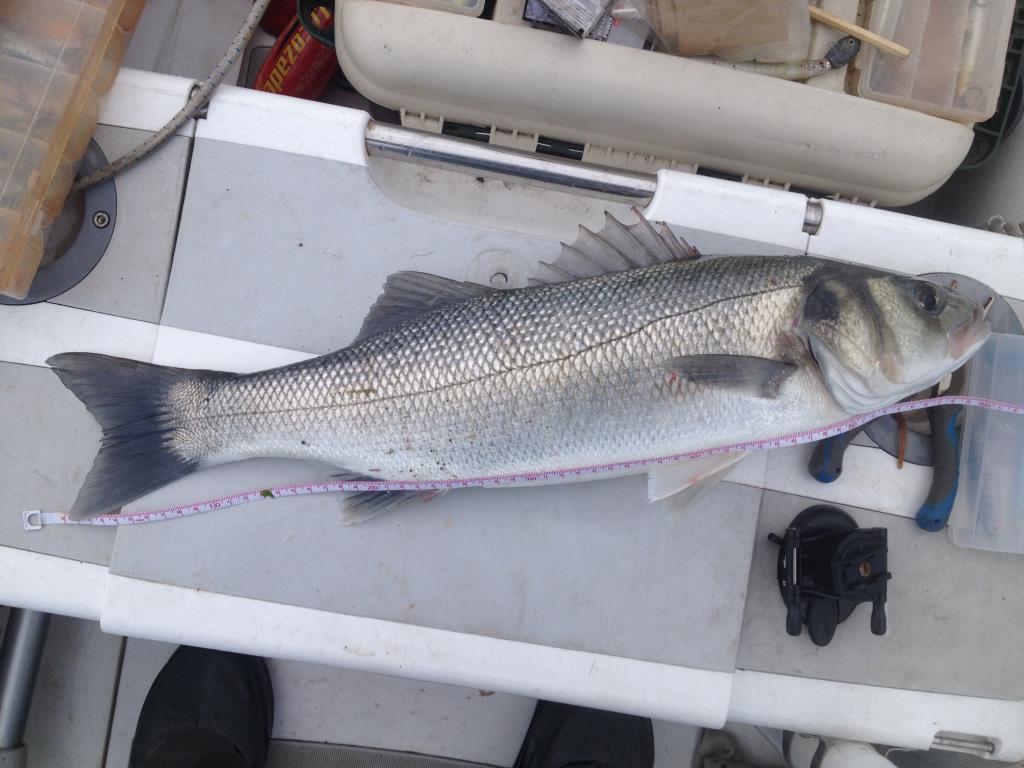Itching to catch a bass on lure? You are not alone.....


Action Stations….. Bass! Credit: Ben Queguineur
Bass 2016 – Another New Season Rolls By
You know when it is coming towards time to target bass on lures. The stretch in the evenings really gets the juices flowing. The rise in temperature and the arrival of some warmth from the spring sunshine is one thing but when the water starts to lose its’ winter “milkiness” and returns to a nice clear blue you can be sure of one thing – bass are on the move.
I’ll be totally blunt about when I start going bass fishing. Of course I’ll take the odd exploratory trip in the Rubber Duck but the real important thing is I will pay attention to anglers that generally fish along the coast east of me. Once they begin to catch a couple of weeks later the bass will begin to arrive on “my patch”. Even before that anglers in Kerry with catch a few bass on lures. This, combined with rising sap says that bass are on their way to my patch!
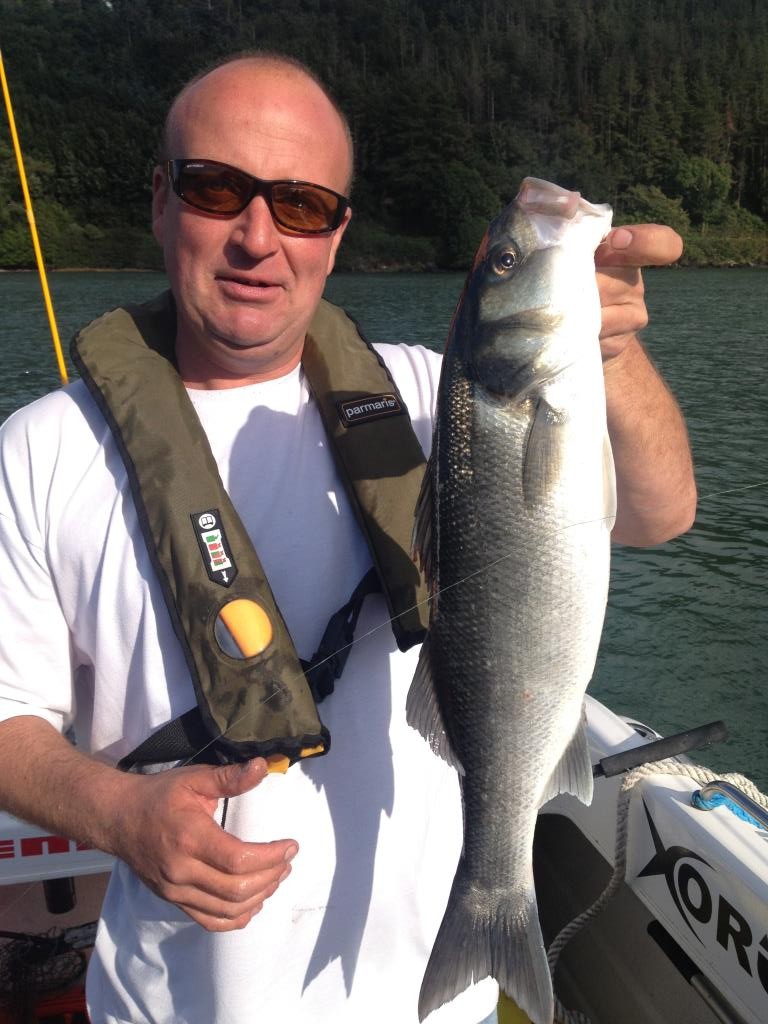
Andy Davies form Cork. Always there for the early season bass.
Not all bass move offshore during the winter. You will usually see a decrease in numbers caught over the winter as the majority move off. You will even see the odd lunatic still fishing with lures during January and February but other than the very far south west of the country the chances of success will be more down to good fortune than anything else. The bass that do move offshore will begin to arrive back in March and by the time that April passes into May the bulk of the bass are cruising their local areas. They will always be some late comers, right into June, but the bulk of the fish are hunting like goodo at that stage.
There is a chance that a pent up angler can explode and head off like a headless chicken in the hope of catching that first new season bass. The experienced angler stacks as many factors in their favour before committing a huge amount of time to chasing that elusive first fish. Obviously the shore angler will have more opportunity to catch than the dinghy angler. Shore anglers can fish in conditions that will not suit the dinghy angler. When I am ready and waiting with my little RIB I dread winds from southerly directions. While it might be great for bass it can be very difficult for the boat angler fishing the south coast. If it far better to be getting a drift that will take you parallel to the shore rather than perpendicular to the shore. That said, as a boat angler you must take what comes and try to give yourself the best option for bass fishing. Areas like Cork Harbour seem to take a bit more time to “fire” for bass. There will be plenty fish moving around but some of the more inner harbour marks will not take off until the end of May.
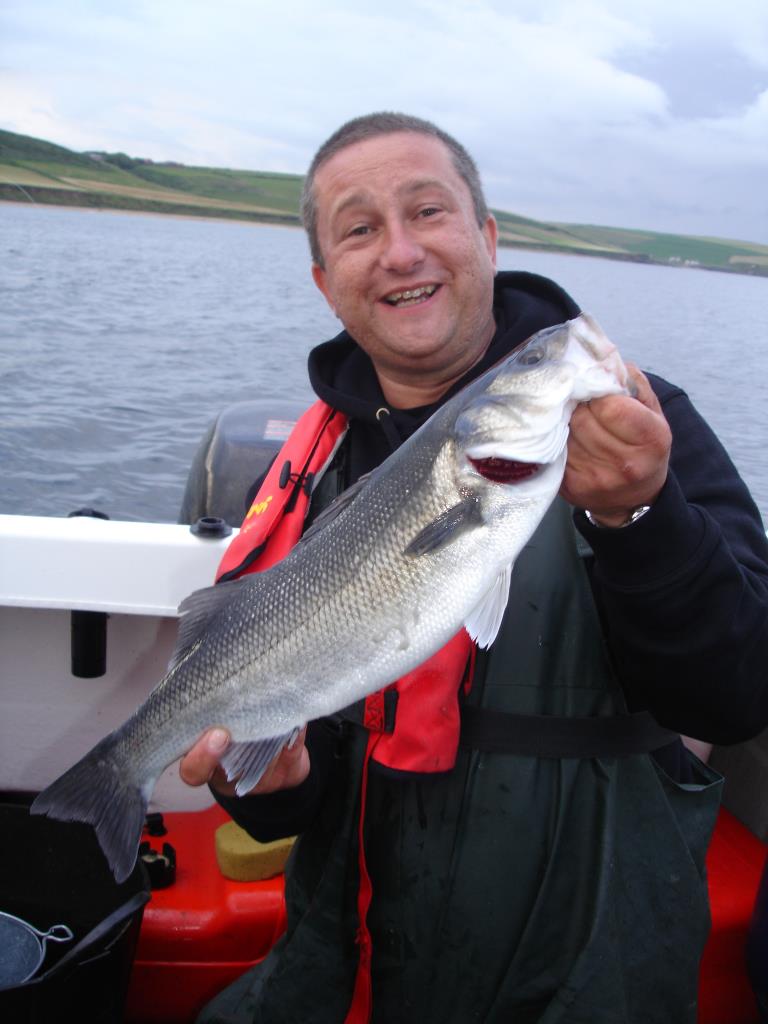
Robert with a fine fish from the outer shoreline
Irish anglers have a great bonus this year (2016). For the first time in thirty years we can fish during all of May and all of June. This fact will throw interesting fishing for many. One mark I depend on for the later season tends not to fish before May 15 yet it fishes well from June 15 – I’m really looking forward to seeing just about when it will fire! (Please note: Whether there is a closed season or not will depend on your interpretation of the rules – there is a distinct lack of information. I consider that I have fished all year to the new EU Regulations so therefore I will fish straight through)
The early season bass sees me casting lures more than fishing vertically. I will spend most time on the shoreline (just standing off to be exact). It just happens that it will take bass longer to arrive at my deeper marks so vertical fishing will not be productive. One thing that fishing the shoreline tends to confirm is the volume of fish that are about the area. To take last year as an example the shoreline fishing was difficult in the early season with a few pods of fish around but it was difficult to find where they were at.
When I am scouring the shoreline I will usually be found using a soft lure. I’ll use soft lures where I can but am quite happy to switch over to a hard lure where the bottom proves to be too hungry and I am starting to lose lures.

Tacklehouse Node – A missile!
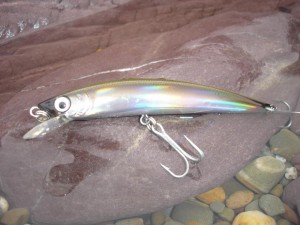
Oldie but goodie – YoZuri Crystal minnow – Still catches ’em
While I’m not hung up on any particular hard lure I do like old favourites like the Tacklehouse Node and of course the ubiquitous Feed Shallow. I probably prefer the Node for its casting ability while the Feed is a bitch to cast but is undoubtedly a bass catcher. I rarely would hitch up a surface lure in the early season unless I hit that elusive “pod” of bass that are competing wildly for grub. It has been a long time since that has happened to me early in the year; it is more common at season’s end. I will vary my colour of lure and pattern during the session until I settle on something that catches. If I was to take a pick of colour I would say the white/pearl colours do quite well in the early season but like all lure fishing it is a matter of experimentation to find a trigger.
Of course there’s a special place for topwater lures. Popping a Patchenko or a Spook and seeing the bulge behind the lure that suddenly explodes in a flash as a bass take off the surface is something else. It certainly is a lovely method but I do have a thing for fishing with soft lures whether casting or fished vertically.
When casting soft lures I will usually try my usual jighead mounted softies. A weight of 10- 18g (about the same as your average hard lure) is perfect for casting and importantly it will allow you to work the lure without it burying itself in the bottom too quickly. The choice of body will be determined by my thoughts on the day and the conditions I am fishing.
I will usually start with natural colours where the water is clean. Greens, browns, whites and silvers are a good bet for catching fish. If the water is more cloudy that I expected I will swing over to pinks and oranges. You can get the idea hear that there is no hard an fixed rule in terms of colour. The important thing is to vary your lure and colour. If you are not catching, change it!

I am a bit more particular when it comes to my soft lures. Let’s think of profile, tail and size. Profile – you have various profiles of soft lure. Think or worm or stick baits. Think of shads or fish shaped lures. Think of creatures or shrimp or crawfish profiles. The tail profile is important. You have the pintail of a stick bait or slug or you have a paddle tail like on a traditional shad. The size of tail can affect the action of a lure. A big tail like on an Illex Nitro shad had a big side to side movement while the small profile of a Black Minnow gives a short speedy motion, typical of a small fish in a hurry. Lately you will see more long lures with small paddle tails. I like these style lures and I love the action that they have in the various scenarios I fish them in. There are some lures that don’t live up to the billing. The Crazy Sandeel is one lure that does not suit casting. The tail takes too much speed to get it moving. It is an alright lure used in a vertical situation. It will also catch cod and pollack if you are inclined to put an expensive lure to work in that situation. I tend not to use expensive lures where a cheaper alternative will do the job.
When I fish big paddle tail lures I tend to fish them with a straight retrieve with a little sink and draw. On the other hand when I fish thin lures I will impart more jerky movement. I am trying to mimic the jerky motion of a sandeel. Where there is current involved I will often let the current do the work and just follow the lure around just mending line and keeping contact with the lure. It is rare enough for me be fishing like this from the boat. I am drifting more than anchoring.
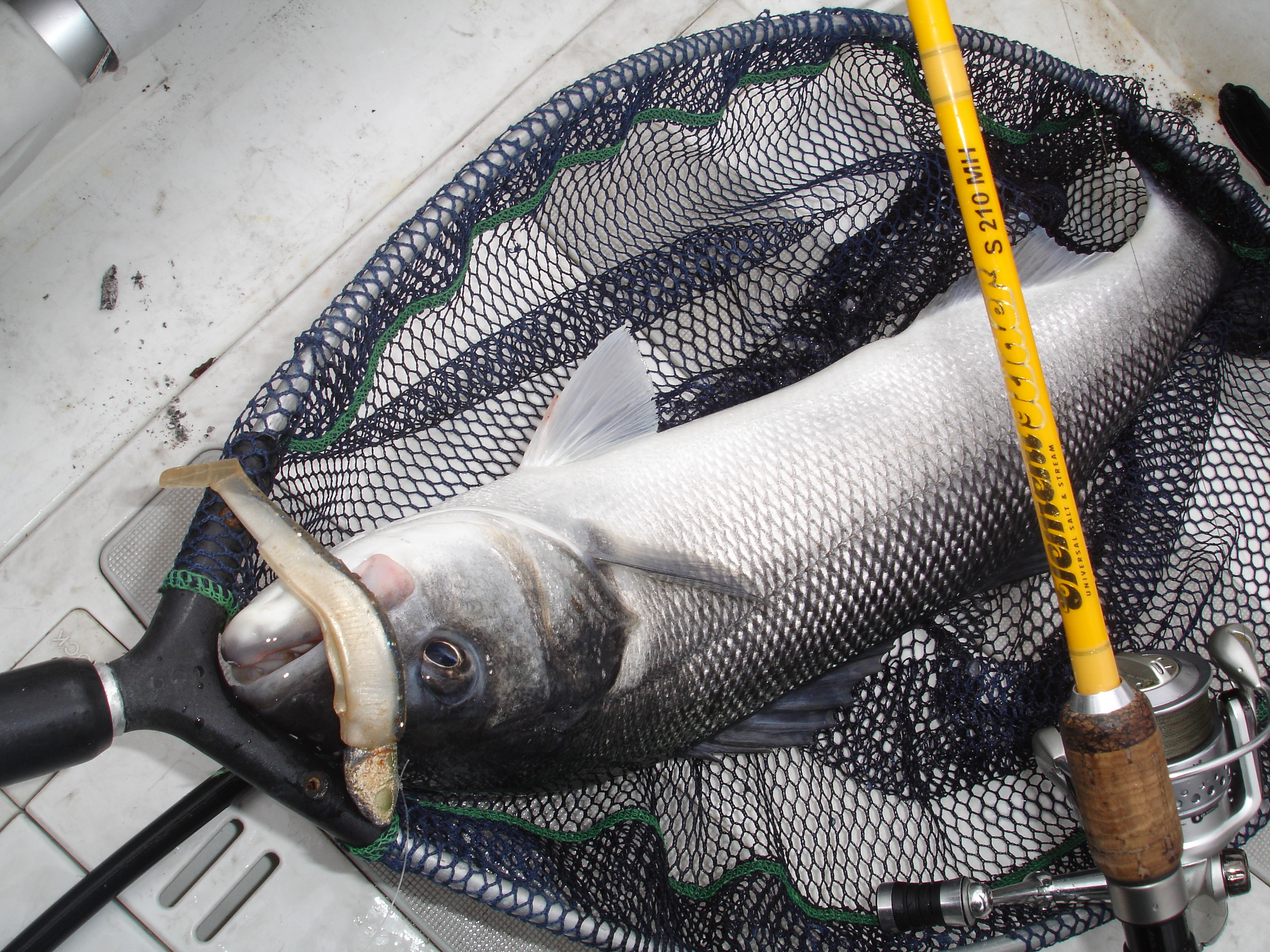
Black Minnow!
Typically I will arrive to a mark and I’ll set up the boat to suit the drift. More often than not I’ll be a position where I can almost cast onto the beach or rocks. By this stage I’ll have in mind which lure I’ll start with. I will make a few casts covering the area. If I think the place looks good and should produce a fish I will cruise around, change lure and have another go. If I have not caught I’ll either try one more go-round or I’m gone to the next spot. Simple fishing really. I would add that I will always have the engine turned off while drifting.
If I do hit a fish I will hopefully fight it and land it. At this stage I have decisions to make. Do I stay drifting or do I pop out an anchor in order to hold me in the area without any noise or disturbance. I might not do this after one fish but certainly I would be considering the option after two fish. That is the gist of a typical shore session for me. If I am fishing the bigger boat and there is a pair of us fishing we will often take turns driving the boat while the other fishes. This would be the case if the drift is perpendicular to the shore and therefore short.
When I am trying out a lure for the first time I will always drop it over the side of the boat and I will work the lure to see what action it has when move through the water. I will see what class of movement it has when jerked through the water. Within a few seconds I’ll have an impression and a view on the lure. Scary to think I have ruled out many lures because I do not like the action at this stage. I will relegate those lures to being cod and pollack catchers when conditions allow. Some lures just look the business in the water. The action of a Black minnow is perfect. The Illex Nitro Slim Shad is a classic. The Savage Gear Sandeel Slug is perfect not in a tail wagging way but in a jerky erratic way. Berkley ripple shads are beautiful and Sakura Koneel is like ballet on a hook! The Crazy Sandeel does not light my bulb where as a Nitro Jerk Lightening has bass catcher written all over it. Whatever lure you choose it all tends to come down to your confidence. If you like a lure and are happy with its action then that lure will catch bass. I am convinced of this. Bass are not very fussy, especially when there is competition amongst fish. The problem is locating the fish in the first place.

I am a dawn and dusk kinda guy!
So what about catching fish and getting the location right. Along my patch there is a good chance of catching a bass from almost any spot along the rocky shoreline. When you move into the harbour there are loads of areas where you can try. Chat to some anglers in the locality and experiment in likely fish holding areas. Some of the best marks come about from guys taking a winger and experimenting. In many areas the tide will dictate what fishing can be done and when it can be done. There really is no alternative to putting in the time on any mark. When you think of it you cannot write off a mark until you have fished it at all stages of tide. There are marks out there where it is possible to catch a bass at all stages of tide. On many beach marks it pays to get into the surf and work a lure. Open beaches were not always the mark of choice for lure anglers… They are now!
While I am not a “night time” lure fisherman there are many anglers who are having superb results lure fishing in the dark. I like the visual aspect of lure fishing so I tend to be a dawn and dusk angler rather than a bat! Darkness can be difficult for boats and boating but it can be stunning in the summer time. The idea of trotting a lure around an open sandy beach can get me moving on the shore! Doing the same on a calm summers evening from the boat is really an extra sensory experience. Night time fishing from a boat brings another set of dangers too. Weigh up the options before you decide that it is for you.
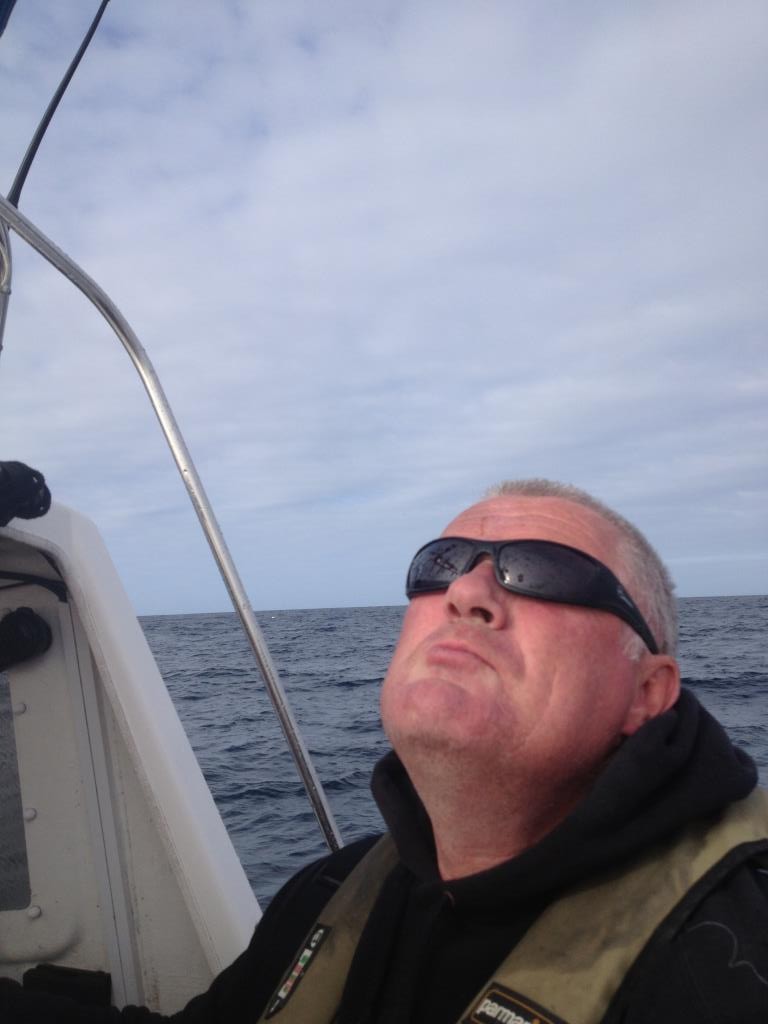
When all else fails – Sniff ’em out!
I will find myself making jig heads, dressing jig heads and generally checking and organising my tackle so that I am ready to take advantage of any weather window. You really cannot be organised enough when it comes to your tackle. The whole idea is to maximise the time that your lures are in the water and actively fishing. Time spent tying up and dressing lures during a session will only waste your fishing time. This is why I will have two rods on board and I will have both rigged up. If I lose a lure on one I’ll pick up the other and keep on fishing. When I get the chance I will tie on a new leader and fish on.

Bass are a fabulous fish to catch. The fight from a bass on a soft lure and using light, balanced tackle is superb. Bass are dogged fighters. From that initial hit which is usually explosive to the strong runs to the head shakes that will nearly stop your heart. A bass will keep fighting until it is exhausted. Just when you think you have the better of the fish and you put the landing net in the water there is every chance that the fish will make a final last gasp dash for freedom. Many a fish has been lost at this stage as the anglers takes the pressure off the fish. Make sure you are still in direct contact with the fish at all times, even when it is time to net.
As usual, handle your fish quickly and carefully and send it back on its merry way. New EU laws might have us fishing through the closed season but remember that we have a catch and release fishery until July 1 and 1 fish bag limit thereafter.
